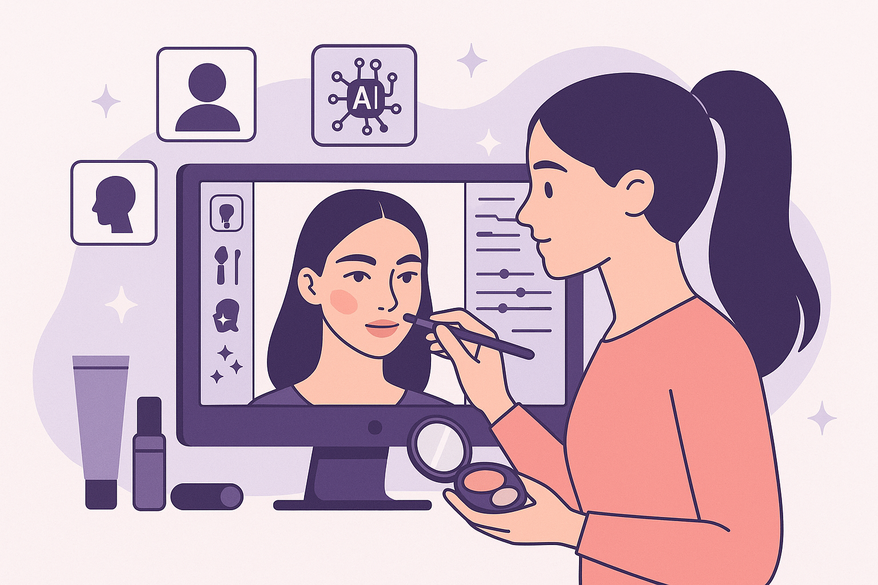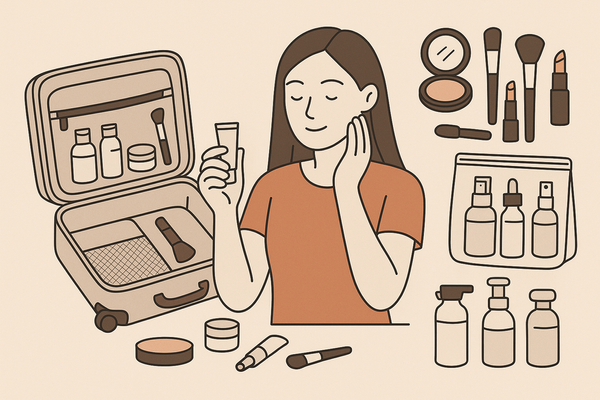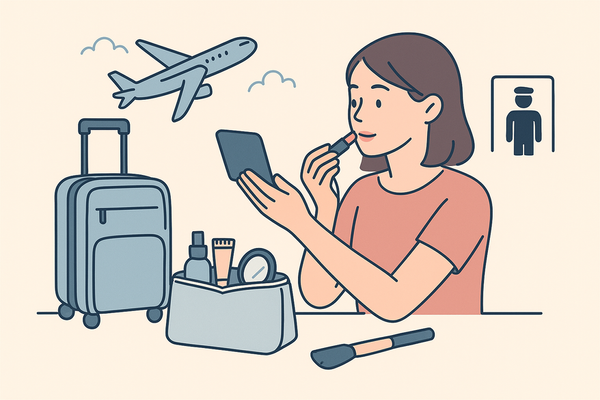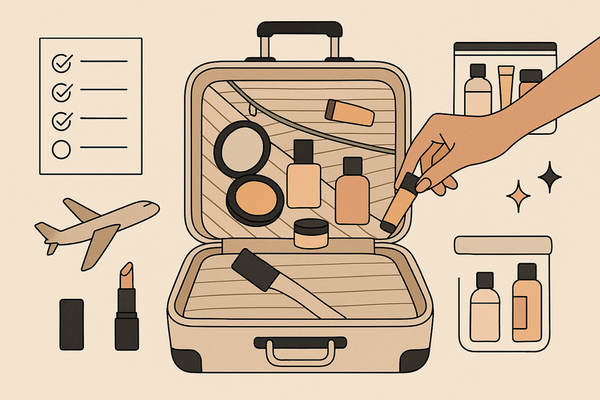Digital Portrait Makeup Guide: Mastering AI-Enhanced Makeup for Stunning Portraits
Learn to master digital portrait makeup techniques and AI tools for professional results. This guide bridges skills from foundational to advanced levels.

Estimated reading time: 12 minutes
Key Takeaways
- Digital portrait makeup blends artistic retouching and specialized software to achieve polished, professional results.
- Integrating an AI makeup generator accelerates workflows, ensures consistency, and unlocks rapid experimentation.
- A layered workflow combines manual techniques—like frequency separation and dodge & burn—with AI presets for optimal control.
- Essential tools include Adobe Photoshop, Procreate, and platforms such as Makeup Check AI for virtual try-on capabilities.
- Understanding benefits and limitations helps maintain authenticity while leveraging automation.
Table of Contents
- Key Takeaways
- Table of Contents
- Section I: Overview of Digital Portrait Makeup Guide
- Section II: Deep Dive into Manual Techniques
- Section III: Integration of AI Makeup Generator
- Section IV: Step-by-Step Workflow
- Section V: Tools, Resources & Software Recommendations
- Section VI: Benefits & Limitations
- Conclusion & Call-to-Action
- FAQ
Section I: Overview of Digital Portrait Makeup Guide
Digital portrait makeup leverages specialized software to enhance facial features, correct imperfections, and realize creative visions. A digital portrait makeup guide serves as a structured roadmap, ensuring consistency and professional polish across every project.
Common Tools & Techniques
- Digital brushes for texture painting and skin details
- Face-Aware Liquify for sculpting and proportion adjustments
- Frequency separation for natural skin smoothing
- Layer blending modes and custom brushes for nuanced makeup effects
Why an Informed Guide Matters
- Anatomy awareness ensures believable enhancements
- Light interaction prevents flat-looking results
- Color calibration avoids unnatural hues
- Facial subtleties like pores, shadows, and fine lines demand more than basic filters
Section II: Deep Dive into Manual Techniques
Skin Preparation & Base Techniques
- Cleanse layers: flatten and organize your layer stack for a stable canvas
- Tonal mapping: establish base shadows and highlights before applying color (source guide)
Eye Makeup Mastery
- Smoky style: build depth with soft brushes and varying opacity
- Cat-eye: define sharp eyeliner using vector masks or the pen tool
- Natural looks: apply subtle shading with low-flow settings and color adjustments
Contouring & Highlighting
- Dodge & burn layers: work with low flow (5–10%) to sculpt cheekbones and jawlines
- Customize placement for round, oval, or heart-shaped faces
Layered Editing Approaches
- Maintain separate layers for blush, lipstick, and eye shadow to preserve flexibility
- Use adjustment layers—hue/saturation and curves—for global color tweaks
Product & Tool Recommendations
- Photoshop brushes: skin texture sets and grain overlays
- Procreate packs: high-resolution makeup brush collections
- Third-party texture packs: pores and freckle overlays for photorealism
Case Study: A fashion portrait employed layered frequency separation followed by targeted dodge & burn, resulting in a lifelike editorial finish (source).
Best Practices:
- Use reference images for accurate color matching
- Calibrate your monitor to avoid color shifts across devices
- Work non-destructively with smart objects and layer groups (learn more)
Section III: Integration of AI Makeup Generator
Defining an AI Makeup Generator
An AI makeup generator is a machine-learning tool that analyzes facial landmarks to apply virtual makeup styles automatically. These platforms learn from extensive cosmetic datasets to replicate realistic applications. Discover more in our article on AI-driven beauty advice.
AI Benefits
- Rapid experimentation with diverse cosmetic looks
- Consistency across multiple images for branding and campaigns
- Automated base tasks—skin smoothing, brow shaping—free artists for creative decisions
Traditional Editing vs. AI-Powered Solutions
Traditional Editing: Full manual adjustability but labor-intensive and variable results.
AI Makeup Generator: Automated with preset customization, rapid batch processing, and high consistency.
Limitations of AI
- Generic results without personalized refinement
- Occasional mismatches in color calibration or texture
- Manual tweaks often needed for a truly natural finish
To explore virtual try-on capabilities, try out Makeup Check AI:
Section IV: Step-by-Step Workflow
Step 1: Planning & Analysis
- Assess facial structure, skin undertones, and style goals using a comprehensive makeup guide.
Step 2: Manual Foundations
- Skin cleanup: remove blemishes and imperfections
- Apply frequency separation for texture control (technique)
- Perform initial dodge & burn to establish form
Step 3: AI Enhancement
- Import the base image into an AI makeup generator
- Select or customize presets for blush intensity and eye highlights
- Adjust parameters based on color calibration and placement tips
- Learn about virtual try-on innovations in this article
Step 4: Refinement
- Export AI output back to Photoshop or Procreate
- Manually refine edges, texture, and color blending (expert techniques)
Step 5: Final Polishing
- Verify overall color accuracy with reference images
- Retouch stray pixels and apply selective sharpening for crisp detail
Practical Tips:
- Maintain editable layers and layer comps for non-destructive edits
- Cross-reference client briefs for style consistency
- Document settings and presets for future reproducibility
Section V: Tools, Resources & Software Recommendations
Adobe Photoshop
- Frequency separation, Face-Aware Liquify, and advanced makeup brushes (learn more)
Procreate
- Optimized brush libraries, layering, and blend modes for detailed makeup work
AI Makeup Generators
- YouCam Makeup: real-time style tests and AR simulation
- Fotor: batch AI enhancements with preset libraries
- Explore in-depth AI app routines
3D Software
- ZBrush or Maya for ultra-realistic facial modeling and hair sculpting (advanced tutorial)
Learning Resources
- Christina Lerchen’s Makeup Guide: step-by-step modules and exercises
- Portrait artistry blogs: tutorials and expert interviews (Number Analytics, MoMAA)
Section VI: Benefits & Limitations
Benefits
- Efficiency: streamlines repetitive tasks and speeds up workflows
- Consistency: uniform looks across series and portfolios
- Creativity: frees time for artistic exploration and style development
Limitations
- Over-reliance on AI can produce generic or overly smooth results
- Unique facial features often require manual touch-ups for authenticity
- AI presets may need adjustment to suit diverse skin tones and styles
Conclusion
A detailed digital portrait makeup guide lays a solid foundation for professional-quality results. When combined with an AI makeup generator, artists can accelerate their workflows, automate routine tasks, and maintain creative control.
By experimenting with both manual and AI-enhanced techniques, you’ll develop a unique, polished style that stands out. Share your experiences, questions, or portfolio results in the comments to foster a collaborative digital art community.
Call-to-Action
What techniques worked best for you? Have you tried combining manual dodge & burn with AI presets? Let us know in the comments below!
FAQ
What is digital portrait makeup?
It’s the process of using specialized software to enhance or stylize facial features in digital portraits, combining retouching and artistic effects for a polished finish.
How does an AI makeup generator work?
These tools analyze facial landmarks using machine learning and apply virtual makeup styles automatically based on pretrained cosmetic datasets.
Which tools should I start with?
Begin with Adobe Photoshop or Procreate for manual techniques, then experiment with platforms like Makeup Check AI for automated virtual try-on.
How do I balance manual and AI workflows?
Use manual methods for base preparation—frequency separation and dodge & burn—then apply AI presets for rapid testing, followed by manual refinement for authenticity.




